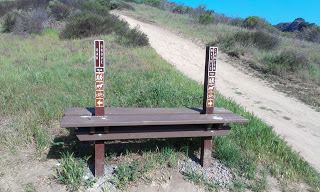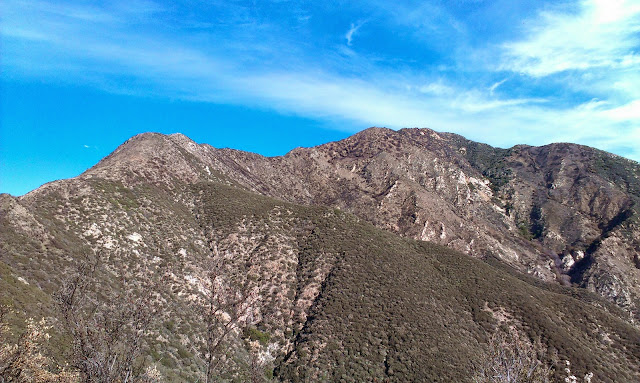Distance: 7.2 miles round trip on trail
Summit Elevation: 915' (high point on this loop)
Elevation Gain: 1400' (1000' out, 400' on return)
Elevation Gain (in Empire State Buildings): 1.12
Round trip time: 2 hours 30 minutes
Recommended water: 48 oz.
Parking/Fees: $15 State Parks
Difficulty: Moderate
The Crystal Cove Back Country, like a lot of popular state and county parks, is a maze of trails. Parking is available behind El Moro Elementary off P.C.H. (Hwy 1) in Newport Beach. Complete information is available on the Crystal Cove web site. The back country trails are generally mellow and offer a variety of family friendly loop possibilities. The ranger station is nicely appointed and has a collection of local stuffed flora, including a mountain lion and coyote.
The outing started as a rare family hike, but Parker soon lost interest, leaving Shelby and I to complete the following loop route:
No Dogs Trail
No Name Ridge
Ticketron past Deer Canyon Campground (single track)
Rattlesnake Trail (single track)
West Cut Across
Poles Trail
No Dogs Trail
Out of the entire route, only Ticketron and Rattlesnake were single track trails. All other trails were as wide as roads, well graded, and crowded. Because the park is so popular, expect to be sharing the trails with a lot of people, especially on weekends. Even in the most remote parts of the park, I never felt like I was in wilderness because there were almost always people in view. While there was some nice scenery near the ocean and some interesting geology, the crowds and expensive parking were a downer. The Center Benchmark is along the Rattlesnake Trail and we went right over it at a jog. I didn't bother to stop and take a photo.
Tip: pay the parking fee and display it prominently on your dash. While we were there, 3 people got ticketed for not paying the parking fee. The fine was a hefty $71.












































